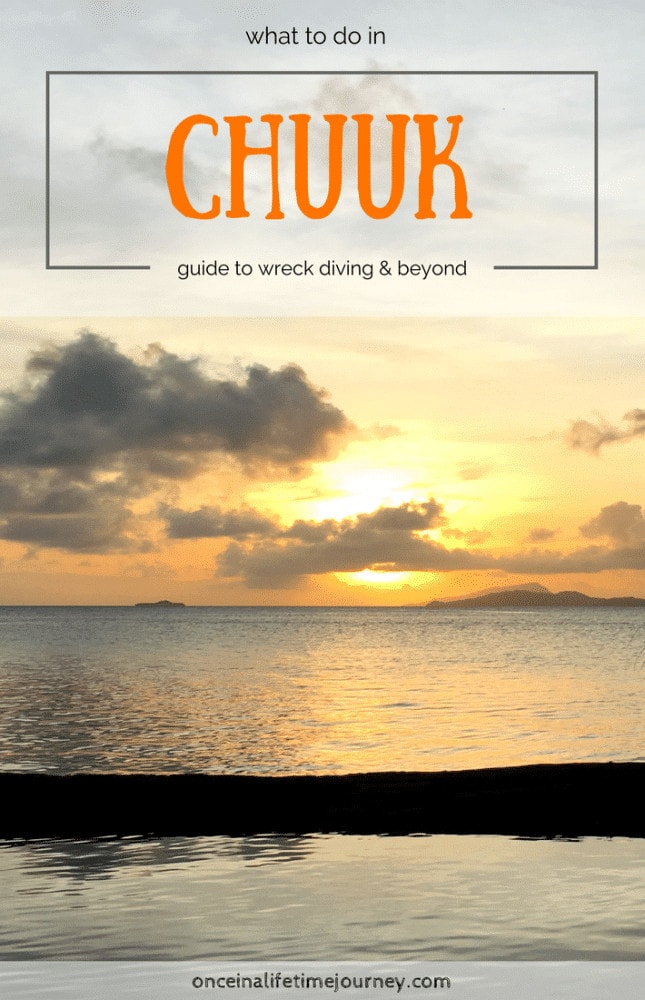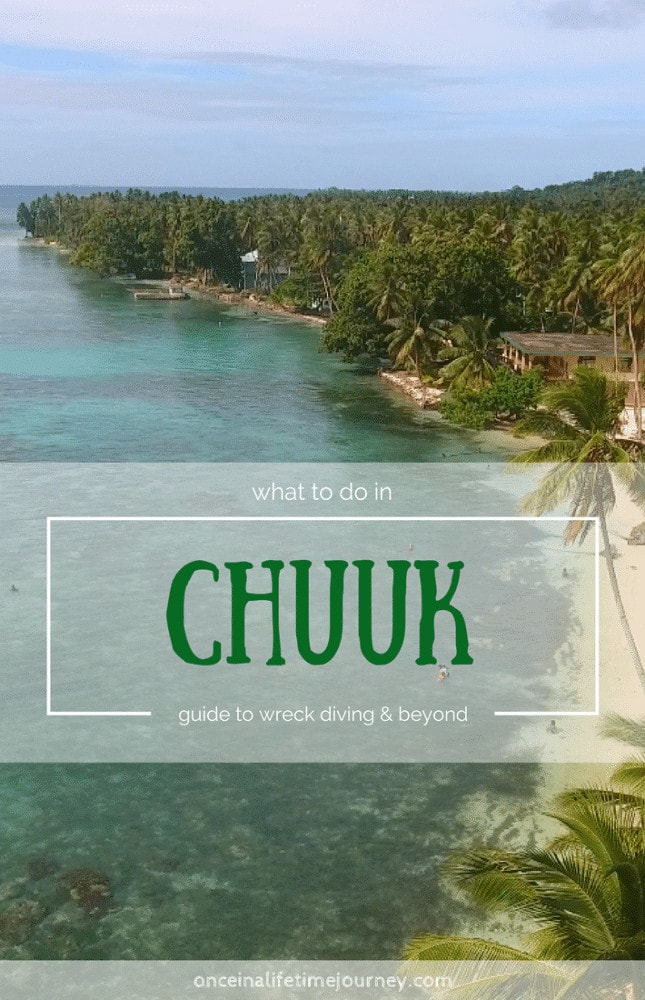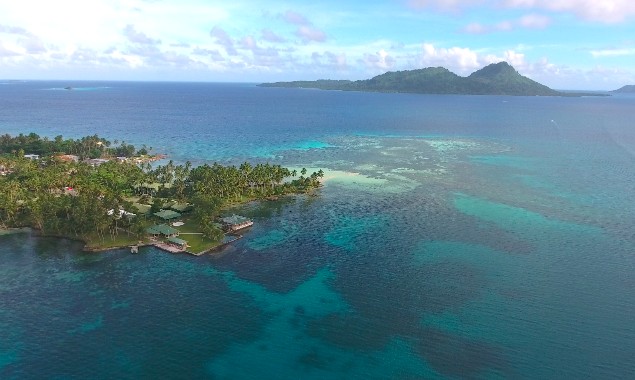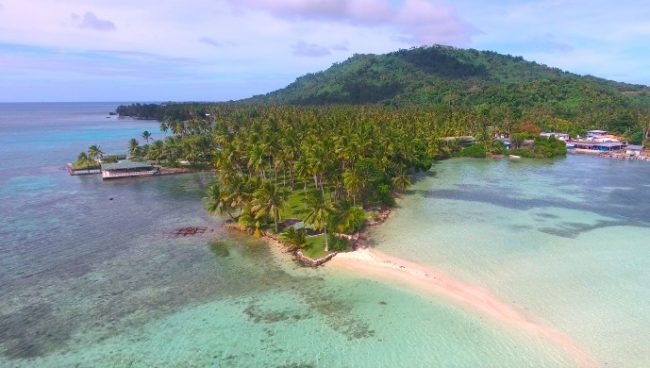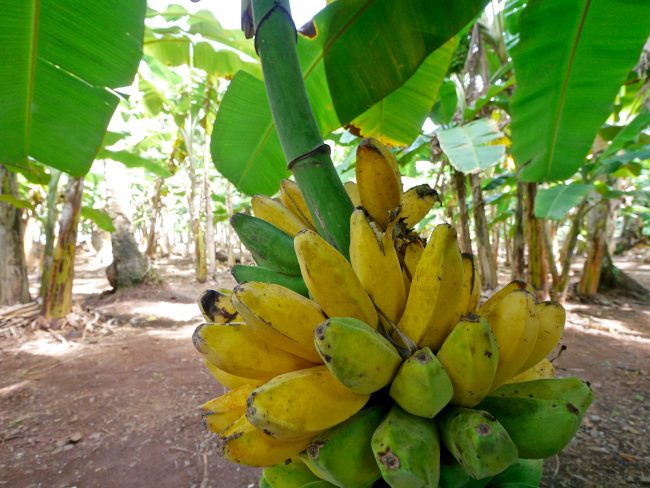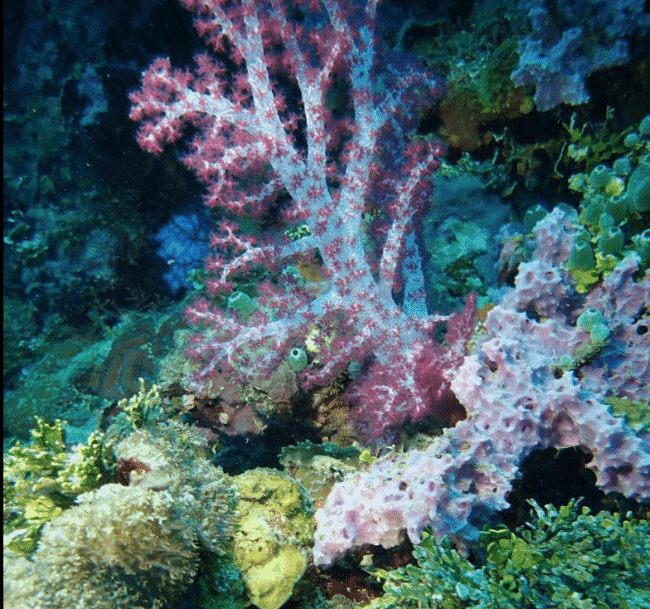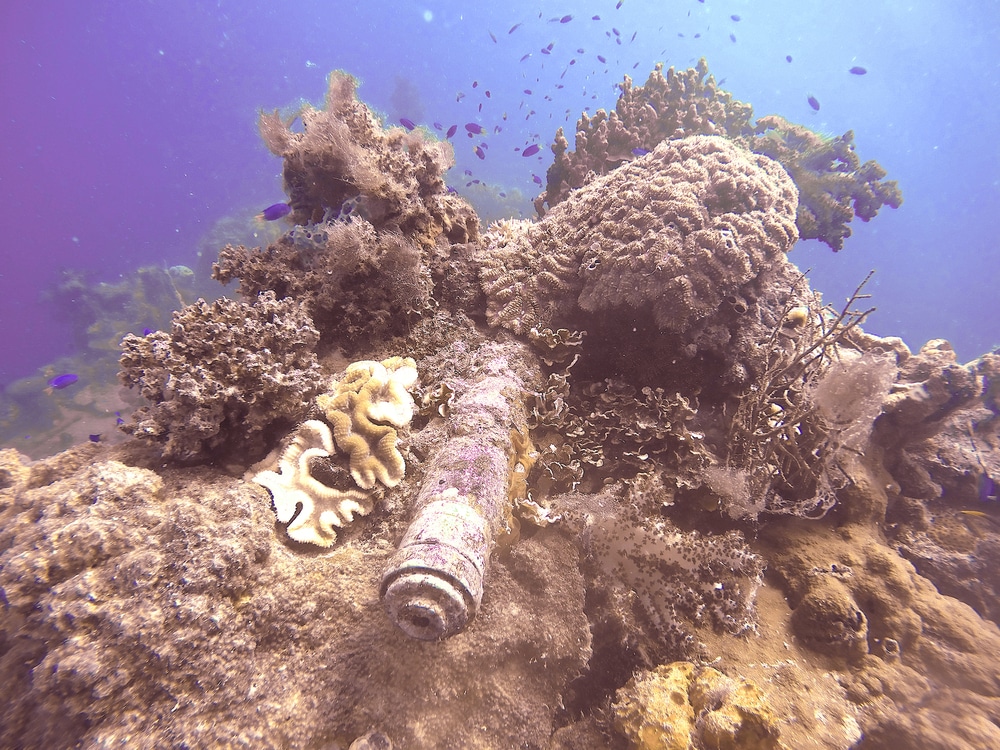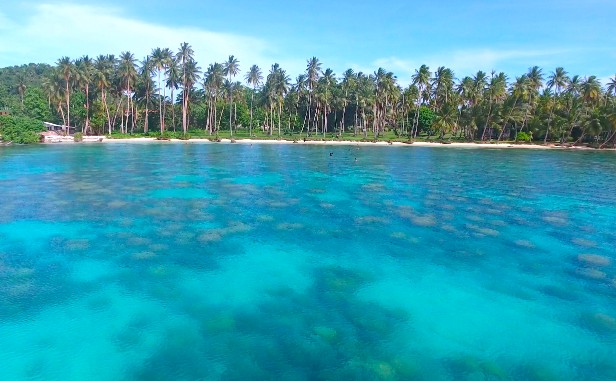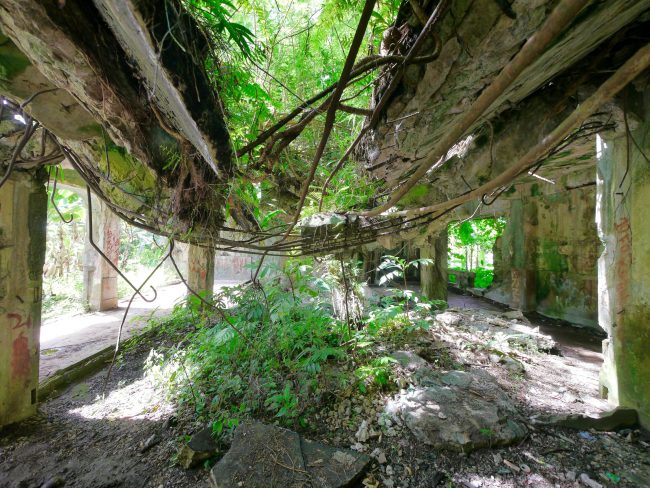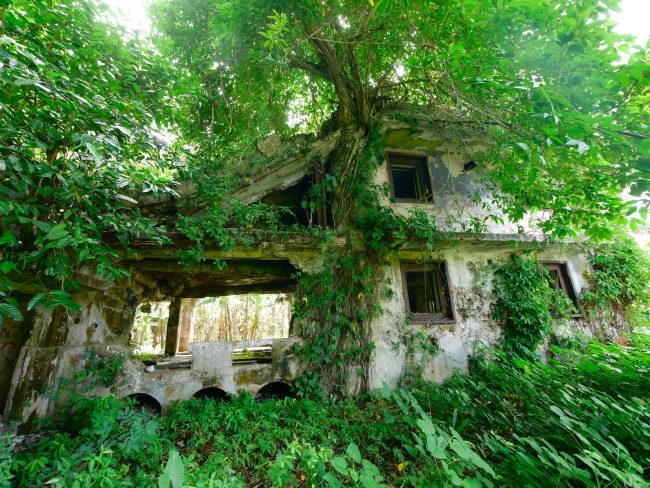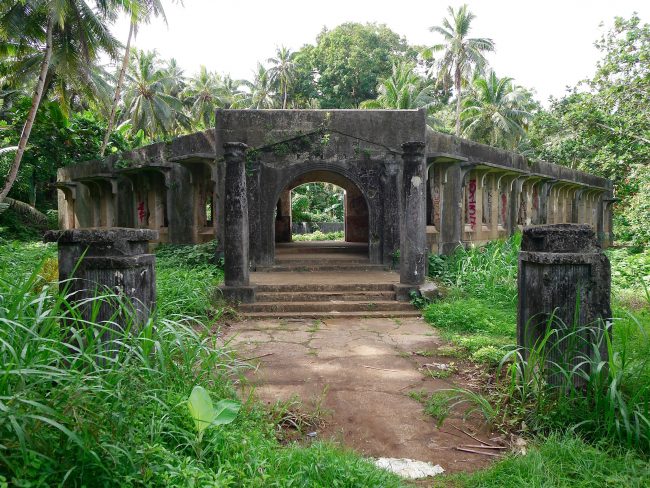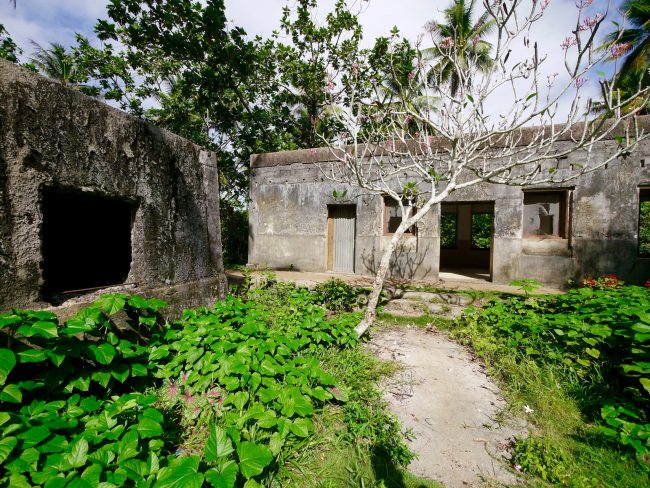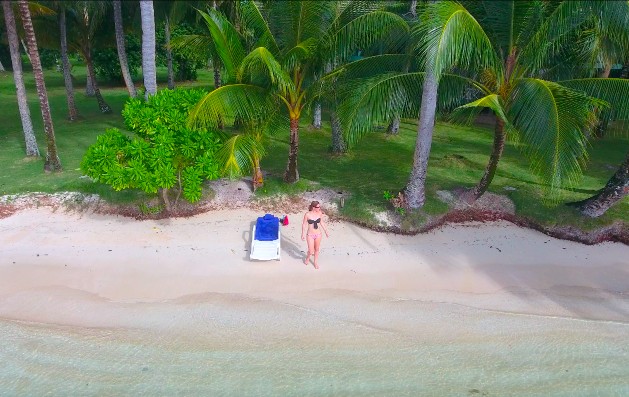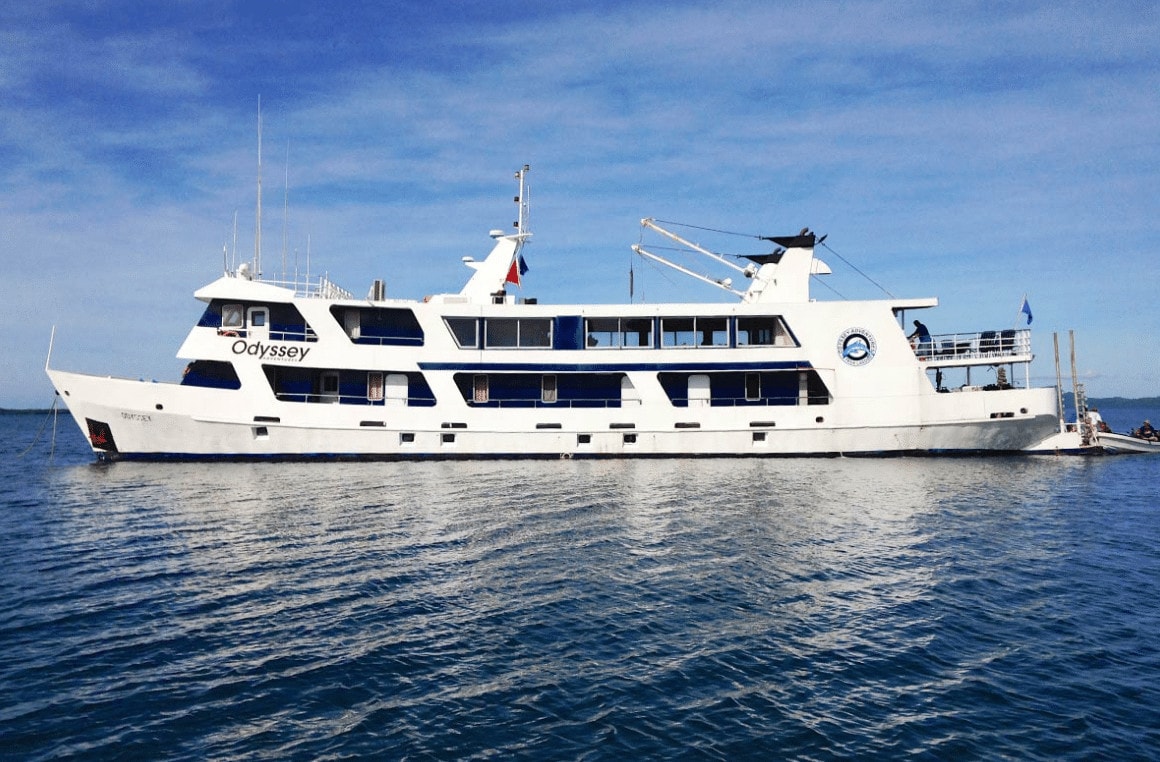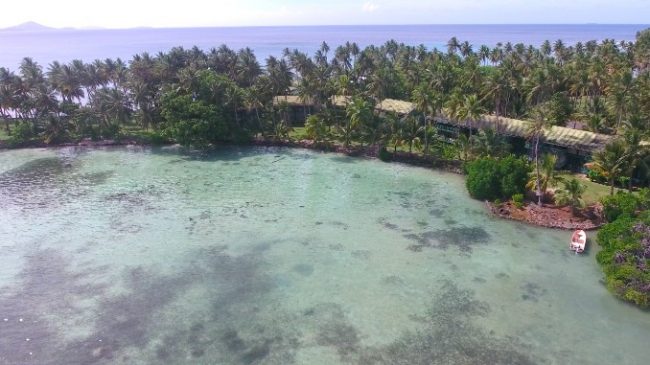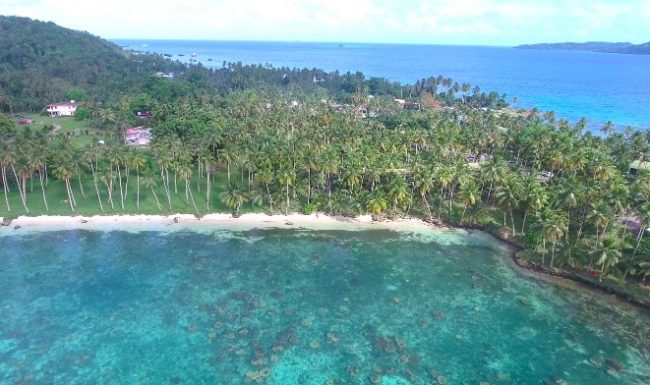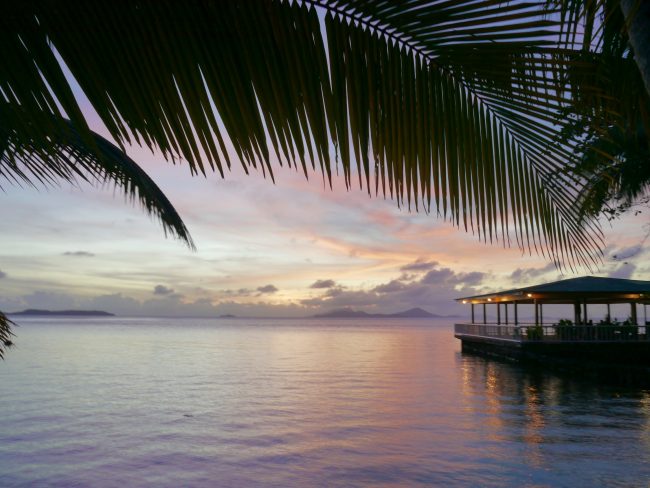Chuuk is one of four states in the Federated States of Micronesia (FSM), a group of islands in the Pacific Ocean located between the Philippines and Hawaii and south of the island of Guam, a US Territory. It is also one of the least visited countries in the world. The FSM is part of the archipelago of the Caroline Islands, a scattered group of islands that were included in a UN Trust Territory under US protection after WWII. Whereas many of them are still US territories and protectorates, the four states of Chuuk, Pohnpei, Yap and Kosrae that form the FSM drew a Constitution in 1979 and became an independent country in 1986. Palau also decided to be an independent country and used to be the world’s youngest country until South Sudan was formed in 2011. Their remoteness and the limited amount of travelers who visit, is the reason why I am fascinated by this part of the world. After having traveled through the South Pacific extensively, from the Solomon Islands to Vanuatu, Fiji, Samoa, Tonga, American Samoa, French Polynesia and The Cook Islands, I wanted to explore the North Pacific.
The state of Chuuk is made of a 50 by 30 mile barrier reef enclosing a few sizeable islands and several other much smaller ones found outside the reef. This protected reef is the reason why Chuuk was chosen as the main Japanese naval base in the Pacific following WWI. Unless you are interested in WWII or a wreck diving aficionado, you are unlikely to have ever heard of this small nation or its wreck infested lagoon which is visited by less than 5,000 tourists a year.
I have decided to call the State Chuuk and not Truk, as you may see it written in many other resources, because Chuuk is the original name given by the locals whereas Truk is the name we have given it in the West. Hence, I will be using Chuuk and Chuuk Lagoon instead of Truk and Truk Lagoon. Read on to find out what to do in Chuuk.
What was Operation Hailstone?
Chuuk’s recent history is bloody, tragic and infamous. As the center stage of Operation Hailstone, the 1944 US attack on the Japanese combined fleet that was stationed in Chuuk Lagoon, the waters of this peaceful nation are filled with the remnants of this deadly attack. Several dozen ships, submarines, carriers, tankers, flying boats, bombers and aircrafts still lay at the bottom of the ocean mostly intact. Although the majority of the human remains were removed in the early 2000s for burial by the Japanese government, some parts of bones and skulls can still be found while diving at higher depths.
Chuuk was the major center of the Japanese Navy fleet operations in the Pacific during WWII and had been under its influence since WWI. As a result, the rest of the international powers knew little about the area and it was believed by the Japanese to be a safe anchorage for the many aircrafts and ships of the Combined Fleet. Until a pair of US reconnaissance aircrafts taking off from the recently conquered Marshall Islands gathered evidence in 1944, the range and extent of the Japanese navy presence in the area was uncertain.
Given the size of the Japanese fleet in Chuuk that the reconnaissance planes reported on, the US and Allied Forces decided that, to ensure their supremacy in the Pacific, the Lagoon had to be attacked and the Fleet destroyed. Admiral R. Spruance decided to attack it with several battleships and other support ships able to carry 500 aircrafts with the objective of destroying the runways and all the ships in the area. He hoped that some of the flagship battleships of the Combined Fleet were also stationed there, but the Japanese, fearful that their position was vulnerable, had moved them out of Chuuk one week before Operation Hailstone.
On the break of February 17th 1944, the American carriers launched several F6F hellcats into the airspace to ensure clear skies only to find them completely empty. The attack took the Japanese fleet by surprise and there was little they could do to defend at such short notice. Over the two-day operation, a total of 15 ships were sunk and another 17 damaged without sinking. As many as 250 aircrafts were destroyed, many in various stages of assembly, as they had arrived aboard cargo ships in pieces. The US also lost 25 aircrafts and had three battleships damaged with dozens of crewmembers losing their lives.
Operation Hailstone was considered a major success in that it almost annihilated the Japanese presence in Chuuk. Aside from the many Japanese soldiers who lost their lives during the attack, thousands were stranded on the islands without any supply lines to their country and died of starvation after that.
Chuuk today
There are approximately 50,000 Chuukese, which is about 50% of the Micronesian population. The local language is Chuukese and those in the tourism industry will also speak English. As a territory that used to be part of the Spanish Empire, then passed to German hands and finally became Japanese until WWII, Christianity is the main religion brought in by the European missionaries. There are few foreigners living in Chuuk today and they almost entirely belong to the US Peace Corps or other small NGOs. As the island holds no interest to foreign powers, there are virtually no expat business folk to be found.
The Chuukese are young with 50% of the population below the age of 24 and decreasing in number as a result of immigration. The local economy is based on subsistence fishing and farming and most items need to be imported. The government, largely funded by the US, employs two thirds of the adult population. Despite 26% of the population living under the poverty line, the communal ways of living make the FSM one of the most economically egalitarian societies.
The local infrastructure in the main island of Weno is precarious to say the least. The frequent rains and the volcanic soil make paved roads impossible to maintain. The journey to cover a few miles from the airport to the southern tip where Blue Lagoon Resort is can take up to 40min because of the incredibly pierced and potholed road that does not allow for a speed above 5 km/h. You will be faster walking.
As few as 5,000 people visit Chuuk every year and those who do are no doubt interested in WWII history and wreck diving. If you did not come here to dive, you will find little else to do as the islands offer little else beyond the sea. Most of the population lives along the shore, where the land is flatter, and the interior of the five main islands inside the lagoon is made of mountainous, thick and overgrown jungle vegetation that is mostly impassable. Despite being a protected lagoon, Chuuk does not have any beaches. The shore is usually made of volcanic rock walls.
Things to do in Chuuk
The Chuukese islands that form the Lagoon are mostly impenetrable and have no tourism infrastructure. There are no guides taking you on a trek up the hills to a look out at the point, no travel agent organising excursions to the remaining WWII land sites. Instead, traveling and exploring Chuuk beyond the WWII wrecks is a DIY independent experience. Some of the things to do in Chuuk that I mention below can be sorted through Blue Lagoon Resort, the most developed and comfortable option on the island. Others will require you to talk to the locals, venture out and find some children or adults that, for a few dollars, will take you sightseeing. They may or may not speak English and will most likely not know much about the history behind the WWII sites they will show you, but you can probably look them up online beforehand. One of the maps available at the main tourist places will be a good guide to point out where you want to go and read up more about everything tourism related that can be found in Chuuk. Below is a list of the main activities and things to see and do in Chuuk.
Chuuk wreck diving
The vast majority of the visitors to Chuuk are expert and fanatic wreck divers coming here in search of the thrill of the hunt, or rather, in search for lost WWII artefacts, guns, engines, ammunition and any other type of cargo.
Surprisingly, despite the relatively clean and clear waters inside the lagoon, there aren’t any large marine species found here. Don’t expect sharks, mantas, dolphins, turtles or anything close to that. I was told fishing has almost eradicated them. The wrecks have been covered with corals and small colourful fish creating beautiful reefs, but marine life is not the reason diving here is fascinating. Taking a glimpse at life frozen under water 70 years on fromOperation Hailstone is.
There are between 50 and 70 wrecks in the lagoon. As some of them are really deep, Advanced or Technical diving certifications are required. But even with an Open Water PADI certification you can go out diving every day for a week and never run out of options. In fact, some of the wrecks are close to the surface and are even visible to snorkelers. The dive masters and guides are relaxed about your certification and ability to dive. When I signed up at Blue Lagoon Dive Center I saw everyone above me having hundreds and even thousands of dives under their belt whereas I was under 100. I was not asked to provide my Open Water ID or registration number and a pen written registration on a book was enough.
I dove down to 25m in most of the wrecks but was not allowed to go to the deeper ones found at 40m. During every dive, the skippers attached an extra dive tank at the safety stop level and the dive guide carried an extra tank on his hand in case any of us ran out of air. All other divers in every trip I took were diving with Nitrox and I was the only Open Water diver I met in the 4 days there. More than half of the divers in every boat were professionals in the industry. Either dive masters, dive shop owners, dive guides or dive travel agents, and they had all the major advanced certifications required to dive at every wreck. They were all staying for at least a week and a few of them were combining a stay on the islands with a week to 10 days on one of the two live aboard boats that dive the lagoon.
One could go on between one and four dives a day and after every dive, we came back to the resort. Boat rides to the major wrecks were fast, taking 15-20min each way and meals were usually taken back at the resort although you could organise a BBQ lunch on one of the islands too or stop at one of the two islets with a beach if your dives were farther away and you had two consecutive ones.
Dive boats were bare and every diver I met, except for me, had carried his or her equipment entirely (sometimes even the tanks) from their home all the way to Chuuk. Equipment rental is possible, but if you stay for a few days, it will be costly and it will be more economical to buy and bring your own. I spent USD75 a day on gear rental. As the dive guides are used to professional divers on their boats, there will be little provided other than a couple of dry boxes. If you need liquid to clean your mask, bring your own or use good old spit.
Once in the water, you will buddy up, but the guide was pretty much letting everyone fend for him or herself, just keeping an eye on everyone and pointing at the holes we could go in. As I was the least experienced diver on every trip and I was diving alone, I buddied up with the guide and this proved to be a great way to identify the key parts in every wreck. Unless you know what you are looking for and where, staying close to the dive guide will ensure you can find the guns, ammunition, bones and all the key parts. Underwater and with the coral growth, it is difficult to recognise anything. A torch will be most useful, especially inside the wrecks where it can be very dark. Gloves are a must so you can squeeze through doors and torpedo holes without scratching your hands.
Chuuk Lagoon most interesting wrecks
PADI’s Encyclopedia of Recreational Diving lists Chuuk Lagoon as one of 4 wreck diving “Meccas” in the world. Its many wrecks have been featured in notorious publications as some of the most important and interesting in the world. At least three of them are included in Sport Diver 50 Best Wreck Dives.
Heian Maru, a Submarine Tender and former Luxury Liner-cargo ship measuring 155m is the largest wreck. Heian Maru bottoms at 36m with top parts of the superstructure starting at just 12m. This is one of the most popular dives because of its depth and its intact name spelled on the bow. Jacques Cousteau made the wreck famous by showing it on TV in the 70s only 20 years since they had sank, when they were still pretty much intact and the remains of the perished soldiers were still there. Periscopes, torpedoes and huge props are all visible in the various parts of the ship.
One of the “Must-dive sites” in Chuuk Lagoon is the Shinkoku Maru, a tanker measuring 152m and found at 12m, bottoming up at 36m. The deck, where many of the interesting bits are found, is only 18m deep. Look out for the operating table, the telegraph or the wheelhouse, which can be accessed through a door. You can also see some bones laid on the main table. Outside, the gun bow is visible and completely covered with beautiful soft and bright corals and there are tables with sets of plates and bottles in perfect state and even two urinals with the Japanese brand still visible. Some of the stunning neon anemones, with their respective clown fish, cover the outer areas of the ship. A particularly bright fuchsia anemone will catch your attention.
The San Francisco Maru is a 117m passenger cargo ship that is also known as the “Million Dollar Wreck” because of the large amount of valuable army equipment still found on it including bombs, mines, ammunition, torpedoes and even a set of three Japanese tanks largely intact. One of the Best Wreck Dives in the World, the San Francisco is only for technical divers as it lays at 60m with the deck at 52m and the shallowest structure at 46m. The photographs of the tanks on this ship are legendary and may well be worth getting the extra training. The explosion sank the ship almost immediately and the tanks ended up one on top of each other for extra drama.
Fujikawa Maru is often called “The Wreck” in Chuuk Lagoon and is possibly the most important one. This ex-Aircraft Ferry measuring 132m is often included in lists of the Best Wreck Sites in the World. Perhaps the most appealing part in this wreck is the two fighter planes in hold 2 as well as many aircraft parts, propellers, ammunition, machine guns and the like. It is also known for holding the R2D2 compressor that is so photogenic.
It is located relatively shallow starting at 9m with the deck at only 18m and going all the way down to 36m. Corals and sea fans have grown everywhere thanks to its shallow location.
The Nippo Maru is known for its gas masks, which make for perhaps the most striking and jaw dropping image of the Chuuk Lagoon wrecks. The ship measured 107m and is found between 20m and 46m. Look out for trucks, antiaircraft guns and other army equipment everywhere. You can go in and through and the holds are full of relics.
There is also a tank on the aft of the ship which is pretty amazing to see.
Snorkelling in Chuuk Lagoon
Although most visitors to Chuuk are interested in diving and the vast majority are technical and even professionals of the dive industry, snorkelers will also find opportunities for WWII wreck spotting. Wrecks like the Gosei Maru, lay at just 2,5m with the propellers pointing up for that interesting photo opportunity. One gunboat, a small cargo ship, is another good snorkelling site and the unofficial symbol of Chuuk Lagoon thanks to its bow gun. A set of three aircraft wrecks Emily, Zero 2 and Betty are a good combination for both divers and snorkelers as the Zero is only at 6m. Blue Lagoon Resort offers snorkelling trips to the main sites.
WWII sites and historical tours
As the main Japanese naval base in the Pacific the various islands in the Chuuk Lagoon are filled with commander posts, navy hospitals and other buildings used by the navy during the period between WWI and WWII. Some of them are accessible on an island hopping tour.
I visited the Japanese Command Post on Fefen Island, a large building from which all operations were conducted. A local village is located next to the ruins of the former building which was bombed during Operation Hailstone. The main roof collapsed as a result of the attack and the entire structure has been engulfed by the jungle with mango trees growing through the side building and palm trees towering in front of the façade. Ask the lady who owns the land by the side of the building to take photos from the side entrance. This is an incredibly eerie and scary place where you can still see the toilet holes on the floor and the effects of the bomb.
The Commander Post is far into the jungle and requires a walk of 15min through thick vegetation and a narrow overgrown path but as there are no bugs or animals, even flip flops and shorts will do, bar a few scratches from the many banana and palm trees. Its hidden location was easily accessible through the airstrip that ended right by the post and which was destroyed during Operation Hailstone. The landing spot on the island is owned by the Blue Lagoon Resort owner and a good place for a surface interval break or lunch BBQ excursion which the hotel can organize. Expect to pay $2 per person to the owner of the post for the visit. The gentleman waiting for you at the disembarking post can climb up a palm tree for a coconut, just ask.
On Tonoas Island you can visit the Military Hospital. The structure is in good shape for a 70-year-old building and you can still see the operating room and the crematory. There is a price of $5 per person to be paid to the owner who will show up before you can enter. Like the Commander Post, this is a testimony to the remnants of a destructive attack.
Sapuk Lighthouse is another commonly mentioned site. You will have to get a local to either drive you up or walk you through the jungle to this sightseeing and lookout point. It is said that the lighthouse can be climbed on a precarious ladder and that the views are great. It is now an abandoned building and, like all other WWII structures, a rather eerie and silent place.
The Japanese Army used many of Chuuk’s natural caves as hiding and storage facilities. The Tonata Guns and Caves are a good example of what can be found across the islands of Chuuk.
On Weno, you can trek up Tonachau Mountain Iras, a 229m high mountain that is believed to be the home of the God Souwoniras and his divine son.
Like in Yap and other Micronesian islands, Chuukese men used to meet in Meeting Houses. The Wichon Men’s Meeting House, by the river of the same name is still standing. The shallow pool at the base of the Wichon Falls is a good place for a dip and to freshen up from Chuuk’s humid weather. Look out for the petroglyphs carved on the walls above the falls.
Kayaking
Blue Lagoon Resort has a few kayaks available for rent. Although the Lagoon is calmer than the open seas, it can still be pretty rough, so make sure to be prepared for the paddle.
Beach time at Jeep Island
If you came to the Pacific thinking you would spend the dive-free afternoons lying by the pool or beach, think again. Although the Blue Lagoon resort has a narrow stretch of sand by some of the rooms, Chuuk has no beach to speak of. If you are beach deprived and need some sand, head out to Jeep Island. A picturesque tiny island with white sand and swaying palm trees, Jeep island is a very small place in which you can finally dip your feet in the sand. The island is found at about 20-30min by boat from Blue Lagoon Resort and requires an express trip, which you can book. You will not spend a long time there, so make sure your boat captain stays with you.
Fonomu Island
Blue Lagoon Resort also owns four rooms on Fonomu island, a stretch of sand and palm trees located on the barrier reef and closest to a Robinson Crusoe experience than you will find anywhere in Chuuk. You can go for a few hours or spend the night and a cook will prepare your meals if you prefer or you can bring your own. The island is about a 20min boat ride from Blue Lagoon Resort. Make sure to get the resort to leave a radio for you should anything happen as there are no communications on the island and many telecom carriers have no roaming agreement with FSM (not that there would be coverage on Fonomu anyway).
Outer Chuuk islands
If you have a lot of time and want to visit some of the most isolated parts of the world, you could take one of the two government owned boats or buy a ticket on the erratic air service to the Mortlock islands. Found about 200 miles from Chuuk lagoon, this is as marooned and far away from civilisation as you will ever feel.
Live aboard on Chuuk Islands
If you want to maximise wreck diving and minimise transport even in the well-connected Chuuk Lagoon, a stay in one of the three live aboard boats that roam the lagoon may be a good option.
The Thorfinn or the Truuk Odyssey have been diving Chuuk for years and are well known to the wreck divers of the world. A new comer, the Master Live aboard is another option.
Odyssey has two double rooms and two single rooms and sets of from Sunday to Sunday offering a maximum of five dives and a day from the ship. Prices are high at USD3,200 per person on double occupancy, but pretty much everything but gear rentals is included, even Nitrox refills.
The SS Thorfinn also sets off on a seven day routine every Saturday and offers packages from USD2,000 for three air dives a day up to USD2,700 for the more advanced continuous diving with Nitrox. It has ten rooms and one luxury suite accommodating a maximum of 22 guests.
The Master Live Aboard is a newer boat with prices starting at USD3,100 for the 7 day run. They also have 10-day trips.
As weather is key for the continuity of some of these services, it is best to check if they are still running.
How to get to Chuuk
Chuuk is as remote and isolated as it gets. There are only flights on four days of the week landing or departing from Chuuk with United and an additional two seasonal and new flights from Brisbane by Air Niugini whose continuity is unclear.
The United Airlines flights connect Guam to Honolulu through Chuuk, Phonpei, Majuro and Kwajalein on Sunday and Wednesday and vice-versa on Monday and Tuesday. This makes a combination trip between Chuuk and Pohnpei a convenient option.
You should book ahead as the flights are always full as they are the only way for the island to be connected with the rest of the world.
Where to stay on Chuuk
There are only two places one could consider visiting: Blue Lagoon Resort or Truk Stop. They both have fully equipped dive centers but a very different vibe. Truk Stop is located in town, very near the airport, and is a good place to base yourself if you want to explore Weno and have access to other local options for food and supplies. Blue Lagoon Resort is further away and you are unlikely to leave the resort other than for excursions organised by the hotel or diving. It is also located where the live aboard boats dock to let passengers on and off so it is convenient if you plan to combine both options. Blue Lagoon is more luxurious than Truk Stop.
Blue Lagoon Resort in Chuuk
Blue Lagoon is made of a scatter of green two-storey buildings with corrugated iron roofs on a grass garden with swaying palm trees. It is right by the water, at the southern end of the island, and it has a narrow stretch of beach and a tidal sand tip that is visible at low tide. The water is clear and the area quiet.
There is a full service restaurant with an extensive menu catering to local, international and Japanese dishes as well as several Filipino favourites. The garden bar, open around sunset times, is a pleasant place to watch the sun go down and there are several picnic tables and chairs around the gardens where you can sit and enjoy the shade. The resort is clean, comfortable and air-conditioned and a great place to base yourself for the diving as it is at the southern end of Weno island, closer to most of the wrecks. The dive center is conveniently located at one end of the resort.
The resort can organise island hopping tours, visits to the barrier reef sandy areas or an overnight stay at Fonomu Island which is owned by the same person as the resort. There are kayaks for rent as well. The Blue Lagoon Dive Center is a complete dive shop with Nitrox and all equipment for all the deep and technical dives. Although they rent equipment, it is rather old, used up and expensive with daily rates for the wet suit, tank, BCD, regulator, fins, boots, mask and snorkel adding up to USD80. So it is advisable to bring your own if you are staying for a week. The dive center has a regular daily three-dive schedule but you can also organise night dives or private boats if you have specific requirements or wishes. Even if you only stay for four days and are arriving on the regular Guam-Chuuk service, you could dive nine sites during your stay, easily covering all the main wrecks in Chuuk Lagoon.
The Blue Lagoon dive masters and guides are knowledgeable, friendly and helpful. As most divers to Chuuk are experienced, the guides will not be babysitting you and you will be expected to check all your equipment and to get ready on your own with limited guidance. Under water, the wrecks are divable in a buddy system and the dive guide will stay with the least experienced group and provide general guidelines about the places that can be penetrated and the key items to see. It is best to stay close to them so that you don’t miss out as sand particles floating in the water make visibility blurry and waters often murky.
Prices for Blue Lagoon are approximately USD150 per room without any meals. Continental breakfast is USD5 and a fry-up is USD7.50. Main dishes are between USD10-20 and there is a daily dinner menu with starter, main course and dessert for USD25. Dive costs USD75 for one dive, USD110 for two-tank and USD140 for three-tank. Night dives at USD80.
Truk Stop
This is a cement building in town fairly close to the airport and the main port. As such, the peaceful and pretty gardens of Blue Lagoon are nowhere to be seen but you will also have more options for meals and evening exploration. As it is located further north, travel time to the wrecks will be longer. Prices are more affordable here. Truk Stop offers island tours on land as well as island hopping. It also offers car rental.
Prices start at USD135 per night for double occupancy and the hotel offers diving packages starting at 4 days.
What to bring to Chuuk
Chuuk is a tropical destination and even in the dry season, frequent showers are common. If you are going diving most of the days, your clothing should be limited to comfortable shorts and t-shirts for in between dives and long pants and long sleeves for the evening if you want to have a sunset drink and not be eaten by the mosquitoes. Flip flops will do.
On the boat, you will be fully kitted with your wet suit on so you won’t even wear any clothes and, since you will most likely be back at the resort (especially if you stay at Blue Lagoon) in between every dive, you don’t even have to bring anything onboard. I highly recommend bringing your own wet suit because you will paying for it in rental anyway. For swimming suits, the best ones are the nice but supporting ones from Rip Curl or from Roxy that won’t come off when you pull down your wet suit. If that ever happened to you (like it has to me), you will know how embarrassing that can be. I put my bikini on, walked bare foot to the dive center, put my wet suit that was hanging to dry on and jumped on the boat.
Other items that you should pack for diving are diving gloves so you can squeeze yourself through the wreck openings, an underwater torch to illuminate the darker parts of the wrecks, especially inside the ships. The one I recommend has the added benefit of emitting a light that makes your underwater photos not appear in the usual blue colors so it has a double functionality. A neoprene hat or bandana to make sure your hair does not get stuck in the corals when you go through narrow openings. I used to have so many issues with that and also, I was always cold. Since I bought my little hat all those issues went away. The one I suggest also has a leash to attach it to your suit in case you are not using it or if you are afraid of losing it. A dive computer will be handy as you will be diving in pairs and may be diving with a different diving profile to the rest of the divers in your group. Nonetheless, the way the dives work, you are unlikely to have issues with surface interval times as there is always enough time between dives. There are countless types of dive computers but I prefer not to spend too much money on them as I only dive for fun so the basic functionalities are good. Suunto and Mares are both reputed brands.
A waterproof camera to record or take photos will help digest what you saw once you are back as it is often hard to capture it all in your mind with the short bottom time at some of the deeper dives. If you don’t have the advanced and very professional cameras with underwater cases, lights and flashes that most of the more dedicated divers have, a GoPro will suffice, or you can get one of the iPhone 6 waterproof cases that can go down to over 40m and are a great low cost option. I found that using the red color correction filter on the GoPro may not help and rather distort the colors, perhaps because of the many particles floating or the changing depths of most wrecks that can vary 15 to 20m from top to bottom and the varying degrees of light in and out of the wrecks. I suggest not using a filter and instead correcting colors in post-production with Lightroom or Photoshop. Or getting the torch that produces the right light so your photos appear in the colors the wrecks and corals are in.
As it is a tropical vacation, other common suspects like mosquito repellent will be needed. Beware of the one I suggest because it has 40% DEET so it is highly toxic. Do not put your hands in your mouth without washing properly. This should only be used if there are a lot of mosquitoes that don’t leave you alone. Zika virus is present in Chuuk so that is also to be considered. I did not see a lot of mosquitoes, and I am usually bitten if there is just a stray one, so a regular repellent would do in those cases. Waterproof sunscreen and after sun should all go into your suitcase, they are a must, even when you are diving all day and when the sky is cloudy. I prefer spray on sunscreen so that it is easier and faster to apply and you can ask someone else, even someone you just met, to do it for you.
Hair conditioner and face moisturizer are essential for the harsh sun, sand, sea combo. If you plan to go on other trips than just diving, a dry bag will keep water off your stuff on the boats as you will most likely use one of the local simple boats that don’t even have a roof and splashing water is a given. Remember that even in the dry season it rains a lot in Chuuk, so if you are going on any land based tour, bring your dry bag. For the treks in the islands, flip-flops or easy waterproof sandals are good. There is no need for trekking boots and a simple pair of the Teva sandals are pretty useful and use up little space in your bag, I have had a pair for years and they are pretty sturdy and durable, and don’t look like those chunky horrible ones, no need to look ugly! Longer pants may be useful to avoid scratches from the many plants.
When to go
Chuuk’s dry season is between December to April and that is also when the waters are calmer for diving and conditions are best. But even in the drier season, rain is a very common feature and showers can happen daily. Temperatures during that season are also bearable with the thermometer dancing between 26 and 33 degrees depending on whether it is sunny or cloudy. If you are diving most of the time, the surface weather does not matter so much but clouds can complicate the location of some wrecks as the dive guides locate them based on their triangulation from key mountains and peaks. So if a cloud is hanging low over one, they may not be able to find a specific wreck and you may dive a different one. Under water, the rains don’t change diving much.
Don’t forget to pin this post!
- Check if you need a visa, get help processing it at iVisa.
- Never ever leave without travel insurance. Get affordable coverage from World Nomads or long term insurance from Safety Wing.
- I find all of my flights on KAYAK. Check their Deals section too.
- Search for all your transportation between destinations on the trusted travel booking platform Bookaway.
- I book all my day trips and tours via GetYourGuide, they are the best and their tours are refundable up to 24h in advance.
- Get USD35 off your first booking with Airbnb.
- Compare hotels EVERYWHERE at HotelsCombined and book with Booking.com.
- Compare car rental prices at Rentalcars.com

